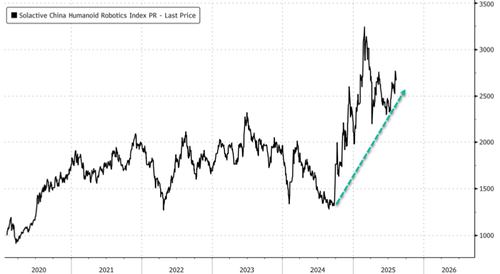Is Your Data Held Hostage? There’s A Ransomware Negotiator For That
Authored by Chris Summers via The Epoch Times (emphasis ours),
Mark Lance’s phone rings when a company’s data is being held hostage. Often, the perpetrators are demanding a ransom to return sensitive information.
“The largest demand for one of our victims was $70 million,” said Lance, a ransomware negotiator with Virginia-based Guidepoint Security.
Failure to pay is under the threat that the company’s information will be made public.
“The earlier we get engaged, the better,” Lance told The Epoch Times.
“In most circumstances … a client has already recognized that they’ve been a victim—they’ve been informed via ransom notes,” he said.
“We help people recognize that even if there’s no intent on paying a ransom, there’s a tremendous amount of value in engaging the cyber criminals, because … you can still do things like delay the inevitable release of their information, which will allow for more time for the forensics and incident response work stream to make sure that they are patched.”
Cyber attacks, usually involving ransomware, are being perpetrated against corporations and state-owned agencies in the United States every day.
In the first half of 2025, a Comparitech report shows 208 ransomware attacks on government agencies globally, a 65 percent increase from the same period of 2024.
Ransomware is a type of malicious software—or malware—that prevents a user from accessing his or her computer files, systems, or networks and demands that he or she pay a ransom for their return, according to the FBI.
The average cost to the victim of a ransomware attack has risen from $761,106 in 2019 to an estimated $5.13 million in 2025, according toPurpleSec, a U.S.-based cybersecurity company.
That includes the ransom payment itself, the recovery costs, and various indirect costs such as reputational damage.
Lance, who has worked in cybersecurity for 25 years, said when he is called in at the early stage of an attack, the victim is usually still performing a business impact analysis.
“They’re not necessarily sure what has fully transpired or has occurred within their environment, to know what they potentially need to do as next steps,” he said.
By “environment,” Lance means all the hardware, software, and networks that support an organization’s operating systems.
He said a ransomware negotiator can manage expectations and give the victim an idea of their options.
He said he can buy valuable time, and also allow the victim to work with legal counsel to determine what sort of disclosure they are going to have to make to the public, to stockholders, to the Securities and Exchange Commission (SEC), and other regulators.
Lance said the threat actors also have to provide some sort of evidence that they have accessed the victim’s data, and will have to provide a file tree, which is a map of directories leading to the files they have accessed.
“We can gather and glean information from those communications that can be shared, that they might not have otherwise. But yeah, the earlier [we are brought in], the better,” he said.
Lance said at an early stage he tries to figure out what the client wants from the communication with the ransomware gang, “and then we develop a strategy around that.”
He said the initial strategy might be simply to delay while they find out more about the attack and how serious it is in terms of consequences.
He said the victim might later decide they are willing to make a ransom payment, and he said, “Then our strategy changes into how we’re negotiating terms, like, do they need it quickly? Or do we have time? So our strategy will change based on the needs of the client and what they’re trying to get out of it.”
Cyber Ransom Notes
Most often, the ransom note is left as a message on an individual system, Lance said. The note will usually advise the victim not to try to touch any of the IT systems and to download a Tor browser, go to a website on the darknet, and initiate communications with the ransomware attackers.
Read the rest here…
Tyler Durden
Mon, 08/11/2025 – 17:40












